As the disastrous 5th Century progressed, the "nummus" was to become the only bronze denomination in circulation.
By this time, the quality of Roman coinage has declined so much that official issues are frequently indistinguishable from the imitations produced by the hordes of barbarians which now occupied most of the empire.
Sic transit gloria mundi.
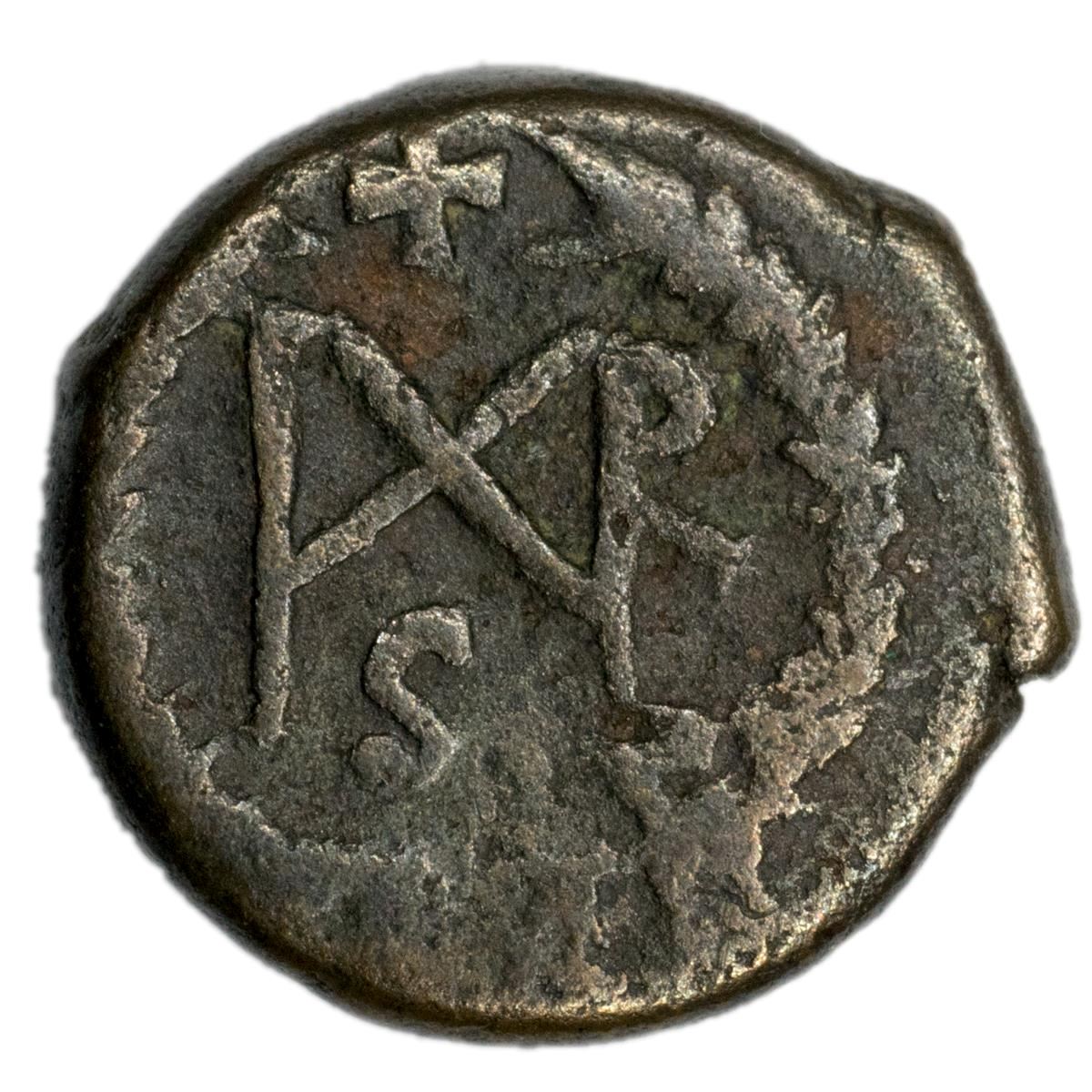
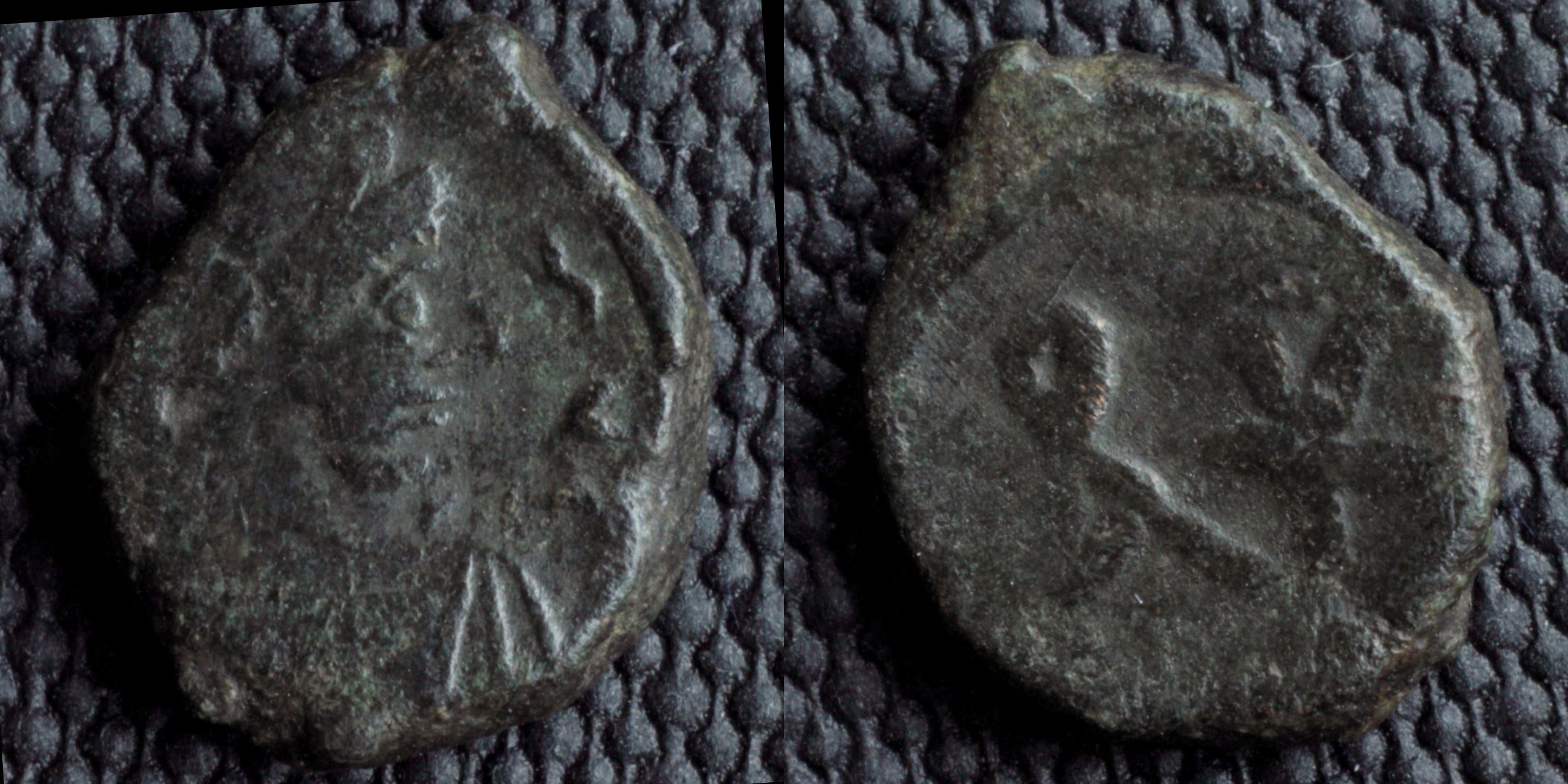
Reverse: Monogram of Anastasius
Die Orientation: -
Weight: 1.06 g
.jpg)
Reverse: VICTORIAE LAETAE PRINC PERP, two Victories standing facing each other, holding between them shield, inscribed VOT PR in two lines, resting on altar ornamented with diamond pattern; five dots within, PLN in exergue
Die Orientation: 6 H
Weight: 2.47 g
(4).jpg)
Reverse: BEAT TRA-NQLITAS, globe set upon altar inscribed VOT/IS/XX; three stars above, PLON in exergue
Die Orientation: 5 H
Weight: 2.96 g

Reverse: VICT • LAETAE PRINC PERP: Two Victories, winged, draped, facing each other, holding a shield inscribed VOT/PR supported by S on altar
MintMark: -/-//•ΓSIS•
Die Orientation: -
Weight: 2.75 g
(61).jpg)
Reverse: She-wolf standing left, suckling Romulus and Remus; two stars above, SMANΘ in exergue
Die Orientation: 5 H
Weight: 2.94 g
(6).jpg)
Reverse: MARTI CONSERVATORI, Mars standing right, holding spear and shield; star in left field, PLN in exergue
Die Orientation: 6 H
Weight: 3.33 g
(8).jpg)
Reverse: SECVRITAS AVGG, Securitas standing facing, head left, legs crossed, with right hand on head and left arm leaning on column; star in left field, PLN in exergue
Die Orientation: 6 H
Weight: 3.61 g
Ex. Roma Numismatics E-Sale 69; Lot 1204. This coin was part of a hoard of 3,442 coins discovered on the 22nd March 1970 by a detectorist just south of the village of Bourton-on-the-Water in Gloucestershire, England. Archaeological evidence indicates the presence of a Roman settlement nearby; the village was located on a major Roman road, the Fosse way linking Cirencester to Leicester, and would have been an ideal location for a posting station. The main hoard, containing 2,707 coins, was found in a field adjoining the Fosse Way and hidden 45cm below ground level. It was beneath flat stones and in a spherical mass that suggested their owner had buried them inside a bag. A further 735 coins were found scattered in the vicinity. The hoard consisted mainly of coins of Constantine I, and over half of the coins in the hoard (1,882) were struck at the London mint. The coin types present suggest that the hoard was assembled early in the reign of Constantine I, sometime between AD 317 and 319. This particular coin is rare, and the only one of it’s type in the BoW hoard. For another example, struck from the same dies, see CNG Mail Bid Sale 75; Lot 1139.
(7).jpg)
Reverse: SOLI INVICTO COMITI, Sol standing left with chlamys across left shoulder, right hand raised, left hand holding globe; S in left field, F in right field, PLN in exergue
Die Orientation: 6 H
Weight: 3.83 g
(0).jpg)
Reverse: BEAT TRANQLITAS, globe on altar inscribed VOTIS XX in three lines; three stars above, PLON in exergue
Die Orientation: 6 H
Weight: 3.82 g
(1).jpg)
Reverse: GLOR-IA EXERC-ITVS, Two soldiers standing facing each other, each resting on spear and shield, two standards between them; CONSΓ in exergue
Die Orientation: 6 H
Weight: 2.4 g
_REDUCED(1).jpg)
Reverse: VIRTVS EXERCIT, standard inscribed VOT XX with captive seated on ground to either side; PLN in exergue
Die Orientation: 5 H
Weight: 3.25 g
Ex. Brian Henry Grover Collection (Roma Numismatics E-Sale 72; Lot 1612)
(4).jpg)
Reverse: PROVIDENTIAE CAESS, camp gate with two turrets; star above, pellet in doorway, PLON in exergue
Die Orientation: 6 H
Weight: 2.99 g
.jpg)
Reverse: FEL TEMP REPARATIO, soldier left, spearing fallen horseman, shield on ground to right; ASIS (reverse Z) in exergue
Die Orientation: 1 H
Weight: 2.17 g
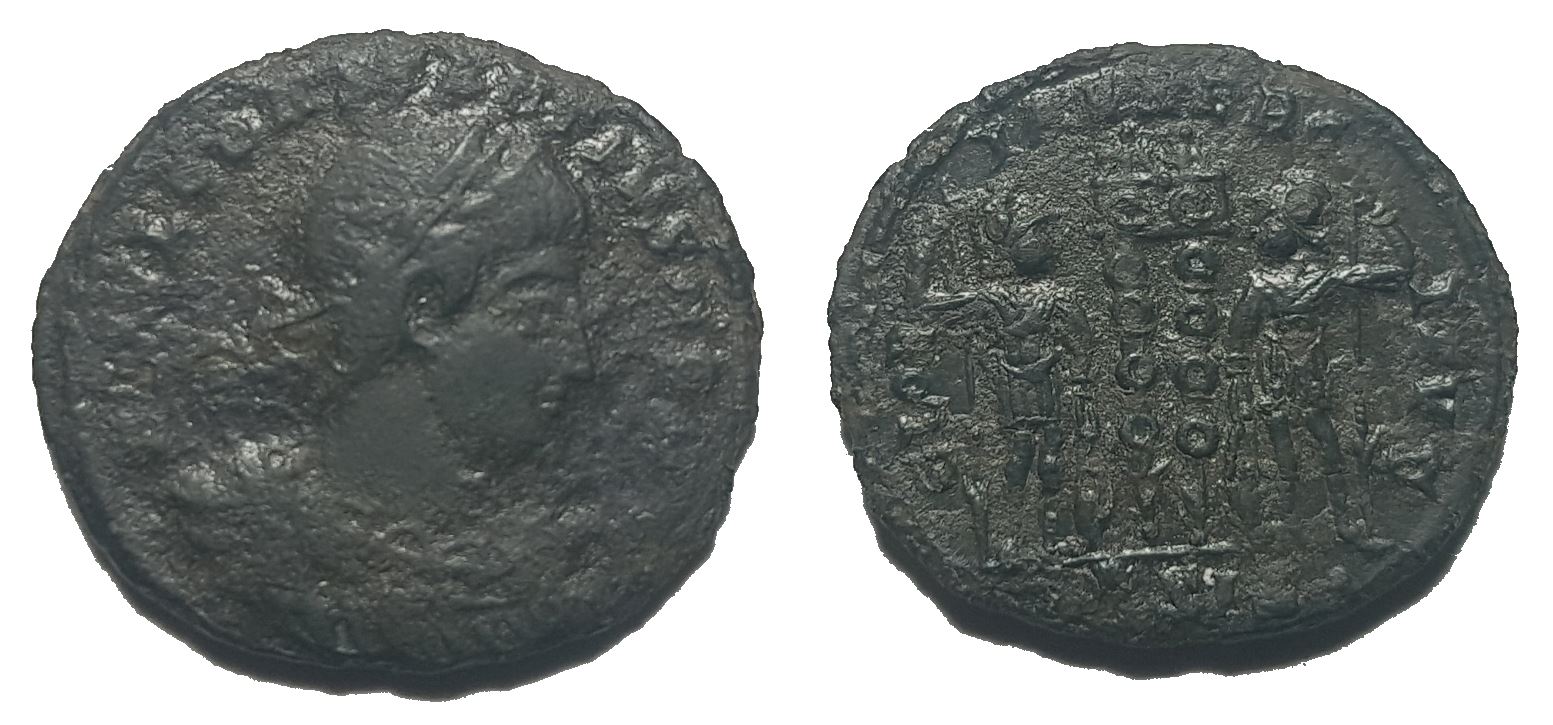
Reverse: GLORIA EXERCITVS, two soldiers flanking two standards.
Die Orientation: 0 H
Weight: 1.82 g
5
.jpg)
Reverse: SOLI INVIC-TO COMITI, Sol standing left, chlamys across left shoulder, right hand raised, left hand holding up globe; S-P across fields, PLN in exergue
Die Orientation: 6 H
Weight: 3.32 g
_REDUCED_EDIT.jpg)
Reverse: BEATA TRANQVILLITAS, globe on altar inscribed VOTIS XX; three stars above; PTR• in exergue
Die Orientation: 11 H
Weight: 2.71 g
A very rare and fine example of this bust type with the Medusa shield decoration. Ex. Roma Numismatics E-Sale 77; Lot 1381
_REDUCED(2).jpg)
Reverse: PROVIDENTIA DEORVM QVIES AVGG, Providentia standing right, extending right hand to Quies who stands to left holding branch and sceptre
Die Orientation: 6 H
Weight: 11.02 g
(3).jpg)
Reverse: GENIO POPVLI ROMANI, Genius standing left, holding patera and cornucopiae
Die Orientation: 5 H
Weight: 9.85 g
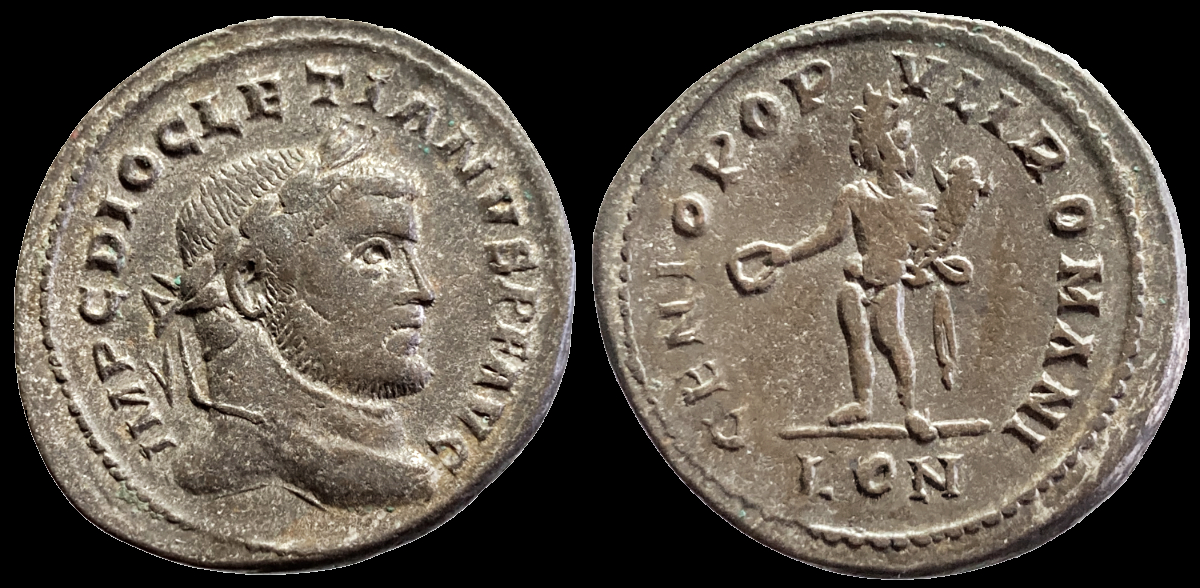
Reverse: GENIO POPVLI ROMANI, Genius standing left, holding patera and cornucopiae; LON in exergue
Die Orientation: 7 H
Weight: 9.79 g
This coin came from the ‘Rauceby hoard’ that was uncovered on 9th July 2017 by two metal detectorists in Lincolnshire, UK. Interestingly, the pot that the coins were found in was buried in the centre of a large oval pit that had been lined with quarried limestone. The pot appeared to have been carefully placed onto the limestone base, and then packed all around with additional pieces of limestone all the way to the top of the pit. The Finds Liaison Officer (FLO) in Lincolnshire at the time (Dr Adam Daubney) has described this as being evidence of so-called ‘ritual’ hoarding, where the coins were used as part of a ceremonial or votive offering. The majority of the coins in the hoard cover the rule of the first tetrarchy of Diocletian/Maximian as Augusti and Constantius/Galerius as Caesars. The hoard ends with the second and third tetrarchies and does not contain any coins of Constantine I issued after he was elevated to the rank of Augustus in December 307. Therefore this would date the burial of the hoard to around AD 307. There are similarities between the Rauceby hoard and the Wold Newton hoard that was discovered near York and was deposited at a similar time. It has been said that both hoards could possibly be tied to the ascension of Constantine as Emperor in York around 307. The British Museum catalogued the coins and disclaimed 2,734 of these in January 2020. This coin was one of 14 LON coins in the hoard (of which the British Museum kept three) and one of five Diocletian LON coins. It weighed 10.77g prior to being cleaned. It is hoped that the British Museum will publish a catalogue of the coins in the near future. For further details & images of the hoard in situ go to: http://www.thehistoryblog.com/archives/55136
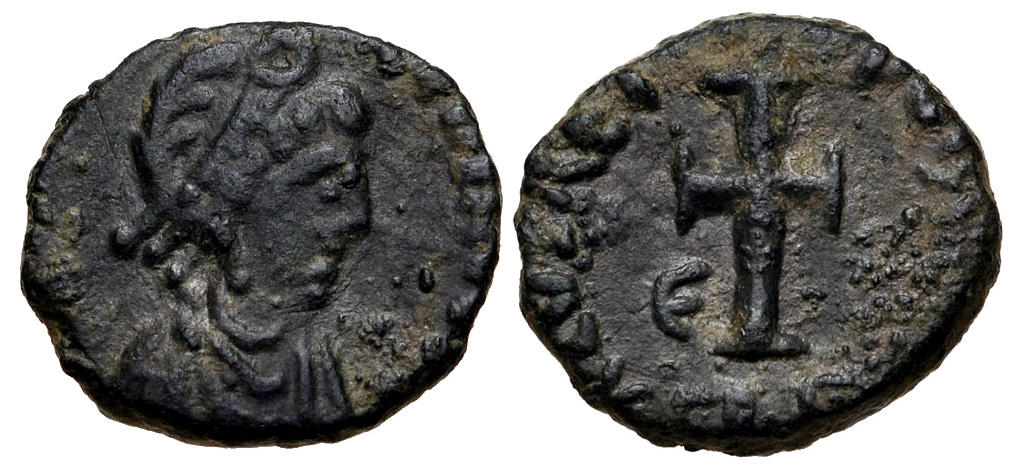
Reverse: SALVS REI P[VBLICE] / RM Cross; in field to left, Є
Die Orientation: 12 H
Weight: 1.7 g
(62).jpg)
Reverse: SECVRITAS PVBLICA, Euphrates seated right on ground, leaning on sceptre with urn at his side and reed in background; CONSS in exergue
Die Orientation: 5 H
Weight: 1.44 g
_2.jpg)
Reverse: SECVRITAS REIPVBLICE, Securitas standing left, lowering branch and raising robe with right hand; SMTSΓ in exergue
Die Orientation: 5 H
Weight: 3.35 g
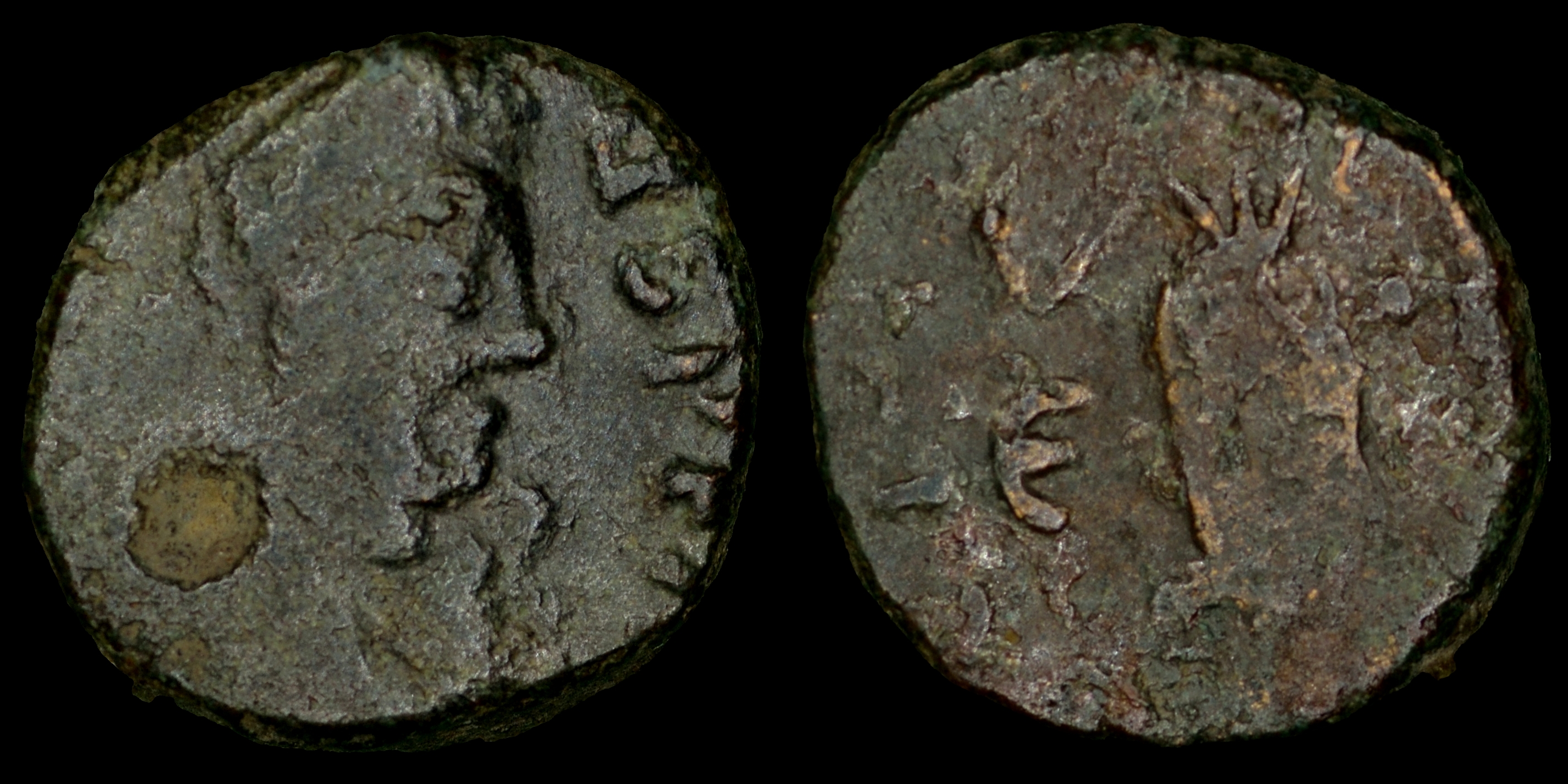
Reverse: VICTOR-IA AVGG, Victory walking left, holding wreath and palm, Epsilon in left field
Die Orientation: -
Weight: 1.5 g
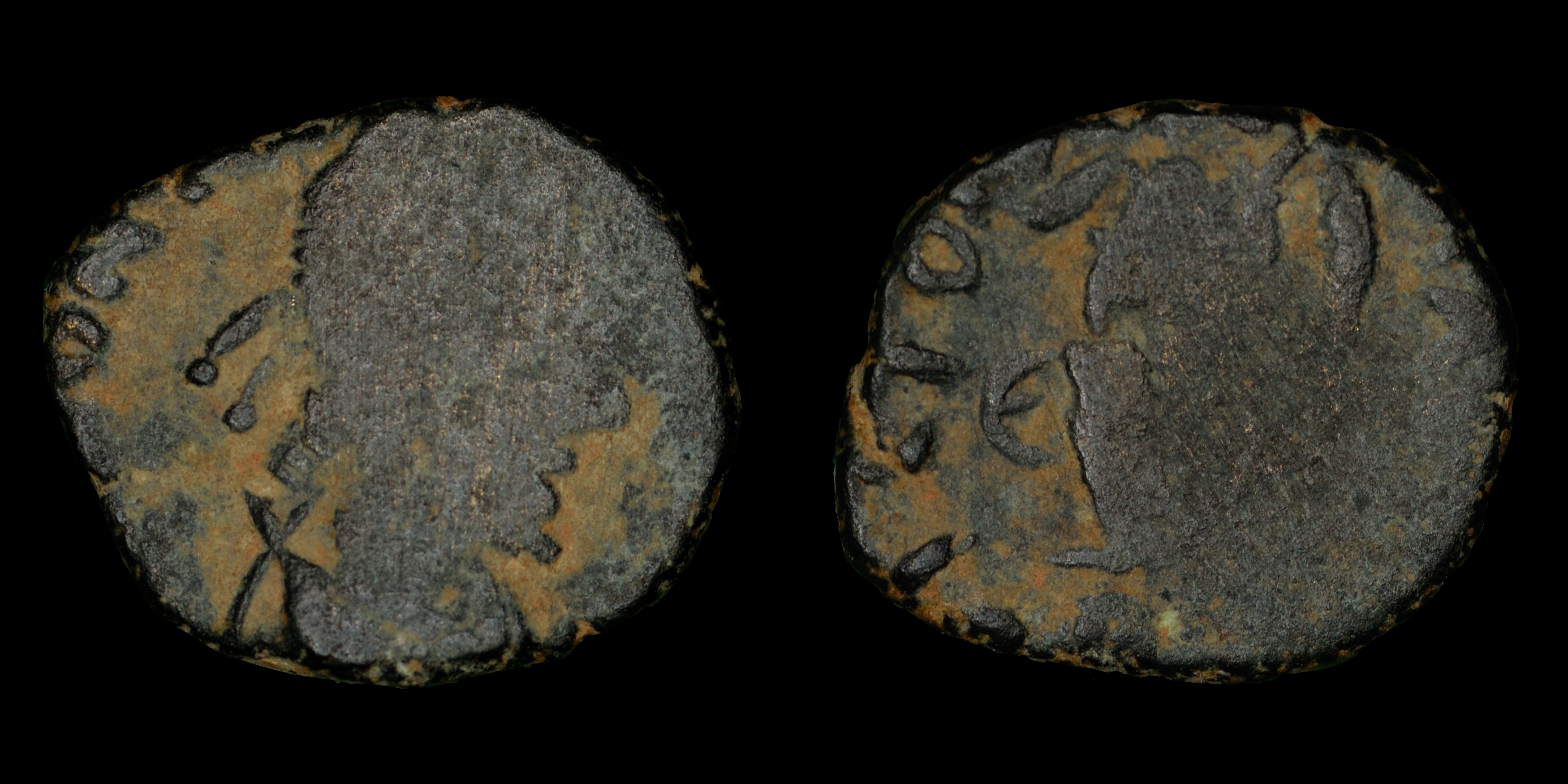
Reverse: SALVS REI-PVBLICAE, Victory walking left, holding trophy over shoulder and dragging captive. Epsilon in left field
Die Orientation: -
Weight: 1 g

Reverse: Verina standing, facing, holding a transverse scepter "b-E"
Die Orientation: 0 H
Weight: 1.2 g
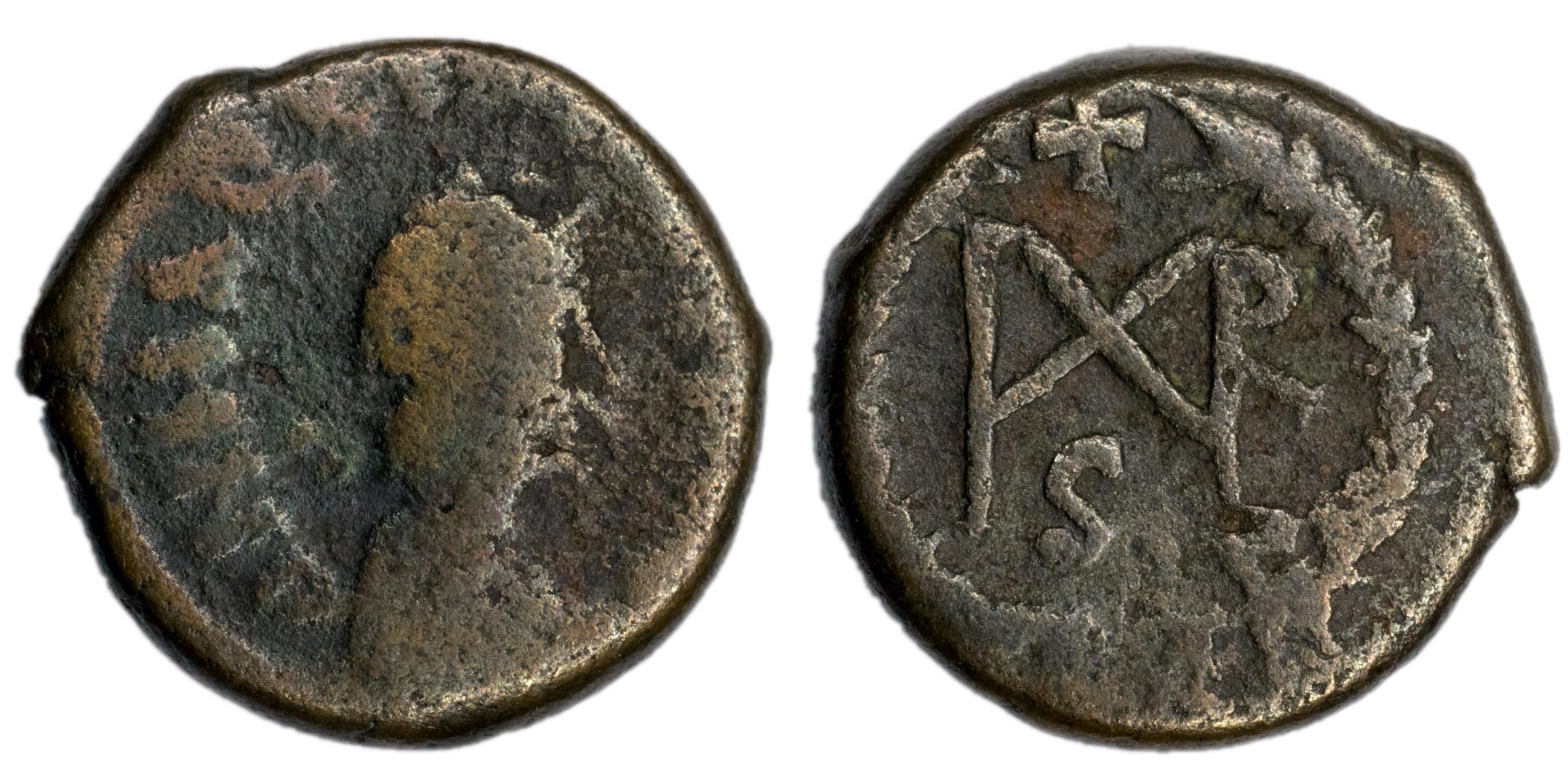
Reverse: Monogram 1B within wreath
Die Orientation: 0 H
Weight: 1.18 g
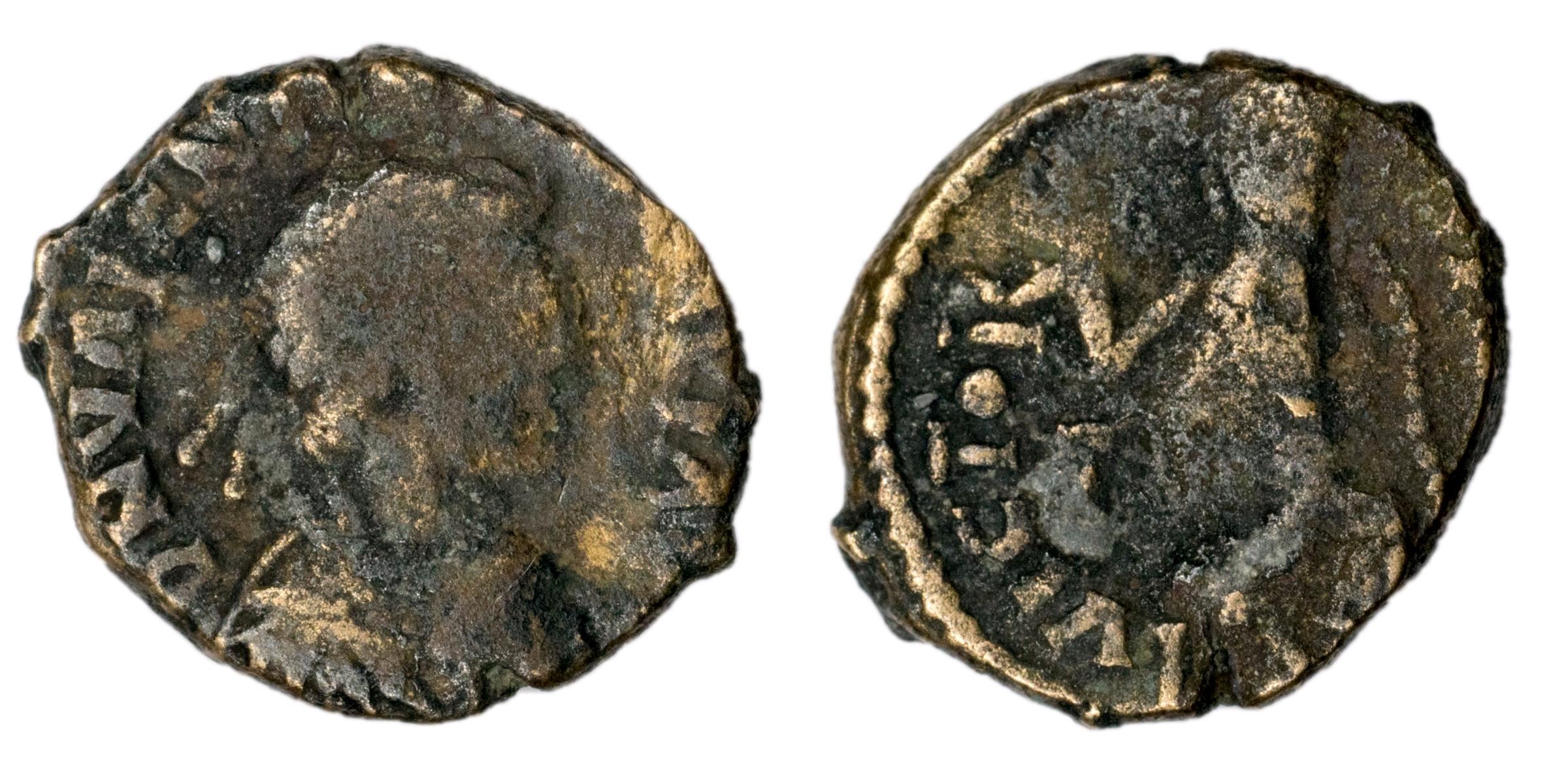
Reverse: VICTORIA AVGG, Victory advancing left holding wreath, T in left field
Die Orientation: 0 H
Weight: 1.8 g
Rare

Reverse: Type 5 Monogram
Die Orientation: -
Weight: 1.4 g
